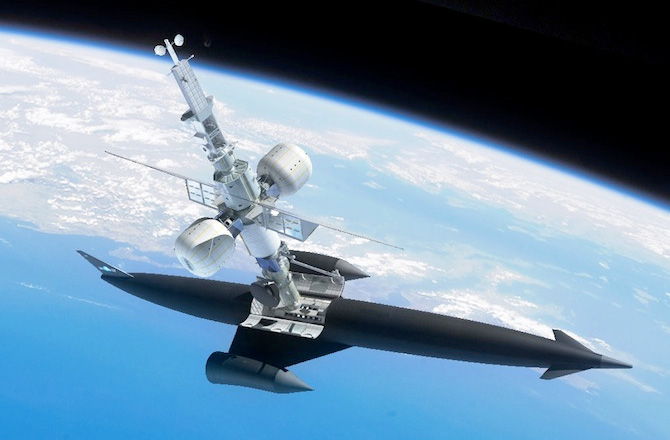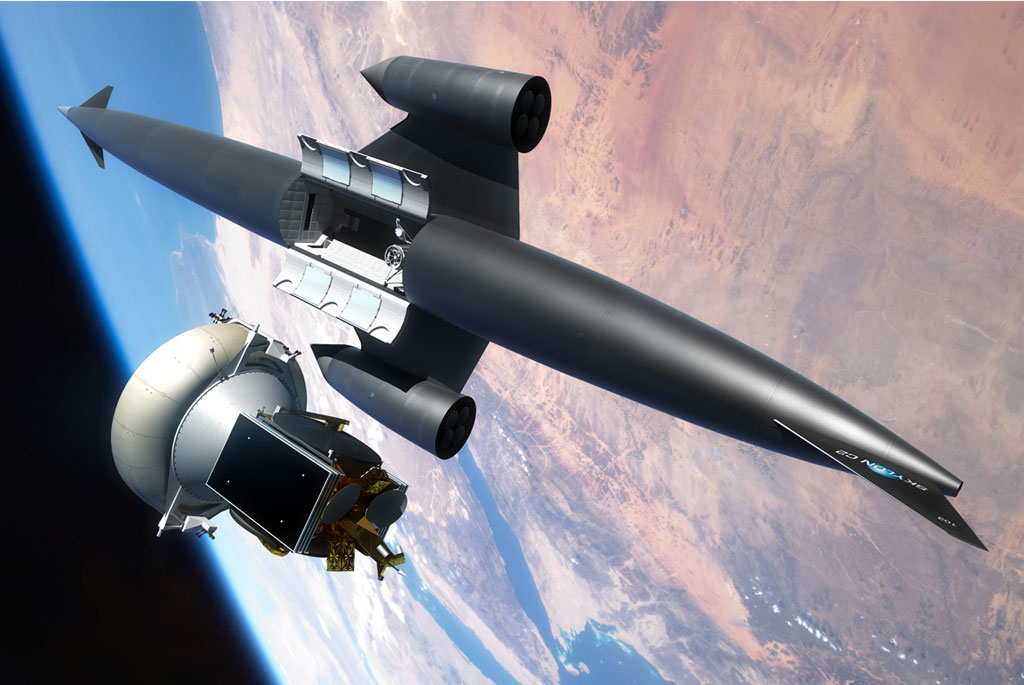Skylon Space Plane: The Spacecraft of Tomorrow

It’s difficult not to be impressed by the towering rockets used around the world to launch spacecraft into orbit. From the colossal Saturn V rockets developed in the 1960s to the SpaceX Falcon 9, one of last year’s highlights, rockets are practically synonymous with space travel in modern culture.
However, rockets are also a huge financial drain on any spaceflight, being only partially reusable. Wouldn’t it be nice if it were cheaper and more economical to get to orbit? Cue the Skylon space plane, currently scheduled to commence test flights in 2019.
ANALYSIS: The Hypersonic Spaceplanes of Yesteryear
Over 30 years in the making, Skylon is a vehicle being developed by British company Reaction Engines Limited, and is being built as the world’s first fully reusable space plane (a spacecraft that takes off and lands horizontally like a conventional aircraft). In fact, each Skylon space plane is intended to be reusable over 200 times — quite a drastic improvement over any space vehicle in active use today.
The most notable benefit of this would be a dramatic reduction in the cost of transporting items to orbit. With current launch vehicles, it costs over $23,000 per kilogram to lift cargo into orbit. This is to cover both the cost of a huge amount of fuel, and the price of the launch vehicle itself. A reusable vehicle like Skylon would slash this price down to just over $1,000 per kilogram. Much more manageable! [Gallery: Concept Images of the Skylon Space Plane]
Creating fully reusable launch systems has been an ambition of the aerospace industry for well over half a century now. Despite plentiful research and development work and a menagerie of design concepts, no such vehicle has yet been created. The closest humanity has come so far was the Space Shuttle, where the orbiter craft and the two solid rocket engines were able to be reused — albeit only after a few months of refitting work. The ultimate aim has always been a Single Stage To Orbit (SSTO) vehicle, capable of launching directly into space from ground level, without needing to discard any rocket boosters on the way.
ANALYSIS: Secret Military Space Plane Struts Its Stuff
Get the Space.com Newsletter
Breaking space news, the latest updates on rocket launches, skywatching events and more!

Unfortunately, SSTO vehicles have, both figuratively and literally, failed to get off the ground. Plagued by funding cuts, design flaws, and poor program management. Skylon itself is the result of an effort to salvage just such a failed concept.
In the 1980s, Rolls Royce and British Aerospace were working on a vehicle named HOTOL. Standing for HOrizontal TakeOff and Landing, this was one of the first serious attempts at a SSTO spacecraft. Unfortunately, due to some serious design flaws and a lack of any significant advantage over rocket technologies at the time, the funding was cut in 1988.
After this setback, the company Reaction Engines Limited was formed, headed by one of HOTOL’s creators, Alan Bond. Privately funded, work has been continuing since then, redesigning the original HOTOL concept into what would become Skylon. With a significantly improved design, the Skylon space plane is bristling with potential, and looks set to be one of the most promising spacecraft concepts so far this century.
To date, tests for Skylon’s air breathing SABRE rocket engines have proved rather successful; based on a unique design which constantly cools incoming air, SABRE engines have effectively double the efficiency of existing jet engines.
ANALYSIS: A Rocket Called ‘Liberty’ Rises From Ares’ Ashes

Specifically developed by Reaction Engines Limited, these engines would give Skylon a top speed of over 30,000 km/h, enabling a suborbital journey from London to Sydney, Australia in approximately 4 hours. As well as being capable of reaching Mach 5 for surface to surface transport, these engines allow Skylon to leave the atmosphere and enter orbit; the initial goal is to provide a cargo transport system to carry goods up to space stations by 2022, with intentions to later modify the vehicle to carry passengers.
While funding has yet to be secured to complete the program, the British and European Space Agencies have given a green light to the Skylon project, announcing their confidence in the vehicle and stating that there are no impediments to further development of the project. Reaction Engines are hoping to have a working prototype flying by 2016, and aim to construct a fleet of them within the next decade.
With each vehicle approximately 82 meters in length and costing slightly under $1.1 billion each, if Reaction Engines are successful then they may well revolutionize orbital transport in the near future. While it may still be too early to say anything for certain, I think we can afford ourselves a certain amount of optimism for Skylon. Things are looking very promising.
This story was provided by Discovery News.
Join our Space Forums to keep talking space on the latest missions, night sky and more! And if you have a news tip, correction or comment, let us know at: community@space.com.









